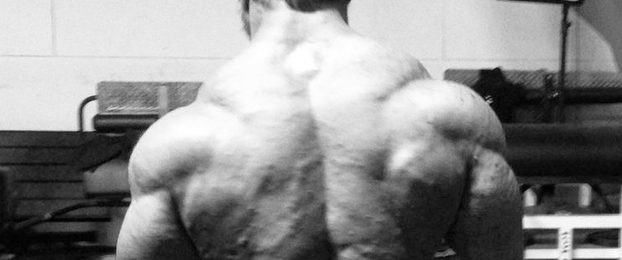
“I get my back into my living.” —The Who, “Baba O’Riley”
I’m becoming a deadlift supremacist more and more. Louie Simmons recently wrote in Powerlifting USA, “A weak man has a weak back, and a strong man has a strong back. It’s that simple.” Today’s gyms contain few examples of this fundamental fact. In the American male’s preoccupation with supine, anterior upper body strength—that is, the bench press—many neglect the vital importance of posterior upper body strength.
The deadlift is such an anatomically comprehensive movement, but the development of back strength might be its most important value. As Mark Rippetoe notes, “The deadlift is a back exercise. It is designed to make your spinal erectors good at holding those intervertebral relationships the same under a load.” If you’re a young guy, Dan John’s standard for basic deadlift strength makes sense: “Generally, if healthy and fit, you should be able to do a double body weight deadlift and a body weight bench press.”
Gyms are filled with guys who can bench their body weight, but good luck finding many who can pull double their body weight. It’s like having a theater major who has read all of Tony Kushner’s plays but can’t name ten of Shakespeare’s characters.
In a past generation, world class bench pressers like Mike Bridges, Larry Pacifico, and Doug Young deadlifted considerably more than they benched. Today, top raw benchers like Ryan Celli and Jennifer Thompson also pull at a higher level. To borrow a phrase from Bill Starr’s, The Strongest Shall Survive, these individuals are totally strong.
Bodybuilders of different generations have also recognized the preeminence of the deadlift for developing overall mass. Mike Mentzer called it “the most productive exercise of all.” He remarked, “If I could only choose one exercise, it would be deadlifts…” IFBB professional Johnnie Jackson has an all-time top ten deadlift in the 220s and says, “I love this exercise. If you really want to find out how strong and powerful you really are, this is one exercise that definitely will let you know how strong you are.”
Another attribute of the deadlift is its accessibility. This year I started training a 58-year-old man with a history of severe shoulder problems that required surgery. Traditional benching and back squatting are out, but he is still able to deadlift. Starting with Romanian deadlifts, Zercher squats, and seated rows, my client started deadlifting from the floor in April. Thanks to the right attitude and coaching inspired by Rippetoe’s Starting Strength: Basic Barbell Training, he pulled 340 lbs weighing approximately 190 lbs (conventional strap without straps) on September 10, 2008. I’d bet that this man is stronger than most men half his age and younger. Why? It’s because he has a strong back, and his whole body is strong in a basic way.
I realize that deadlifts aren’t popular in most gyms. (Some gyms even ban them!) They’re not popular for the same reason that real squats aren’t popular—deadlifts are tough. You have to stay on your feet, coordinate an immense amount of muscle, and tap into primal identity. Deadlifting is a systemically taxing movement that does not tolerate candy asses.
The deadlift is also bullshit proof in a way that the squat and bench press aren’t. A person might cut a “parallel” squat three inches high or trampoline the bar off his chest Alexandre Moskalenko style. A deadlift can’t be faked, and a pull that stalls even three inches short of lockout just doesn’t look legitimate. In a gym culture rife with bullshit, the deadlift is needed more than ever.
“Do you want to be a cop or do you want to appear to be a cop?” Captain Queenan asks William Costigan in the beginning of The Departed. Those who bench religiously every week but don’t deadlift might ask themselves if they want to be strong or appear to be strong. If the answer is the latter, keep up the flat incline/decline, flyes, skullcrushers routine with some ugly pull-downs and rows thrown in. If total strength is your goal, put the bar on the floor, stand up with it, and get your back into your lifting.
Elite Fitness Systems strives to be a recognized leader in the strength training industry by providing the highest quality strength training products and services while providing the highest level of customer service in the industry. For the best training equipment, information, and accessories, visit us at www.EliteFTS.com.








